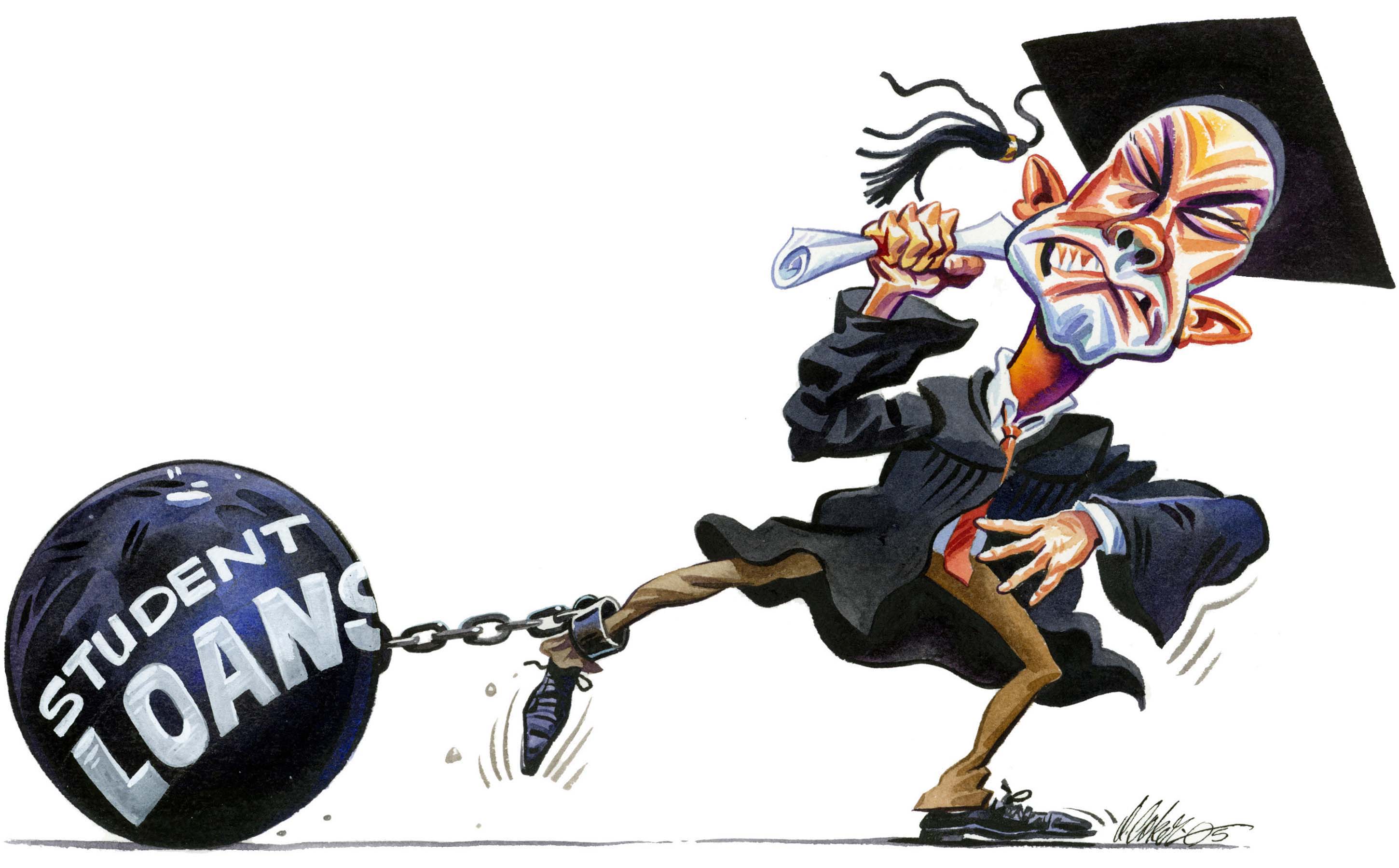Whether its Apple’s updated terms and conditions or any other potentially important document, most people prefer to bypass the legal mumbo-jumbo and hastily click “I accept.” However, federal loan entrance counseling, a mandatory 20 to 30-minute session offered on studentloans.gov, provides valuable tools and information that promote financial literacy for first-time borrowers.
The services can be invaluable for students avoiding as much student loan payments as possible. So, here are the basics.
William D. Ford: The Face of Student Loans
It’s easy to forget that behind the $1.48 trillion of American student loan debt is a simple piece of legislation, which probably started out with good intentions.
One of the first revelations I discovered in federal loan entrance counseling is that the Federal Direct Loan Program is named after William D. Ford, a democratic Michigan Representative from 1965 – 1995.
Recognized for his commitment to increasing educational opportunities for families with limited income, Ford served as the chairman of the post office and the civil service, education and labor committees. During his first year in Congress, he sponsored the Elementary and Secondary Education Act of 1965, which provided aid to poor school districts and became a crucial component of President Lyndon B. Johnson’s War on Poverty.
Representative Ford then introduced the Middle Income Student Assistance Act in 1978, expanding the college student loan program. Nearly two decades later in 1994, the Federal Direct Student Loan program was named in his honor. Needless to say, Ford, who made it his life’s work to provide college opportunities for disadvantaged youth, would have never imagined student loans crippling the very students he aimed at helping.
You Have to be Interested in Interest
Direct loans, such as Direct Subsidized Loans, Direct Unsubsidized Loans, Direct Plus Loans and Direct Consolidation Loans, are “simple daily interest loans,” meaning that interest accumulates every day.
The formula is pretty basic. The amount of interest that accrues daily is calculated by dividing your loan’s interest rate (as a decimal) by the number of days in a year, and then multiplying that number by the principal balance (amount borrowed).
For a $10,000 Direct Unsubsidized Loan with a 6.8 percent interest rate, you’d only have to pay $1.86 per day. Doesn’t seem too bad, right?
However, good things do not always come in small packages. Interest adds up and paying student loan interest while you are still in school or during your grace period, a set amount of time after graduation when no payments are due will save you money. Unpaid interest will be capitalized on unsubsidized and plus loans, which adds the amount to your principal and increases your total repayment.
With a College Degree, You’ll Soon be on the Rise, but So Will Your Interest Rates
Federal loan entrance counseling informs students about current interest rates. Direct subsidized and unsubsidized loans are first disbursed between July 1, 2017 and July 1, 2018, and currently have a 4.45 percent interest rate for undergraduate students. For the same disbursement dates, graduate or professional students will receive Direct Unsubsidized Loans at six percent.
However, according to the Washington Post, rates are projected to rise by more than half a percentage point starting July 1. Undergraduate students’ interest rates will increase to 5.04 percent, and graduate students’ rates will reach 6.59 percent.
In order to prevent student loan rates from hitting completely debilitating numbers, Congress does have limits in place. Interest rates on undergraduate loans cannot exceed 8.25 percent, and graduate loan rates cannot go higher than 9.5 percent. Nonetheless, federal student loan rates are contingent on the market.
The Government Will Cut You Off
Direct Subsidized and Direct Unsubsidized Loans have annual loan limits, which are the maximum amount you may borrow for an academic year, and aggregate loan limits, which are the maximum amount you may borrow in total for undergraduate and graduate study.
The annual limits for undergraduate dependent students are $5,500 in a student’s first year (no more than $3,500 in subsidized loans), $6,500 in the second (no more than $4,500 in subsidized loans) and $7,500 in the third year and beyond (no more than $5,500 in subsidized loans).
In total, the subsidized and unsubsidized aggregate loan limit is $31,000, and no more than $23,000 may be in subsidized loans.
You Control the Amount You Borrow
Federal loan entrance counseling encourages students to borrow responsibly and manage their expenses.
If you eventually need less than you are eligible to receive, you can reduce your student loan amount by canceling all, or just a part of, your loan disbursement. In the event that you need to borrow more later in the year, you can ask your school to increase your next loan disbursement.
Federal Student Loans Trump Private Student Loans
Although federal student loans seem to create an abyss that carries students farther away from financial freedom, they have significant advantages when compared to private student loans.
Federal student loans have lower fixed interest rates and loan fees, with no cosigner or credit check requirement — with the exception of Direct Plus Loans. These loans also are more likely to have flexible and affordable repayment plans and consolidation options.
Private student loans, on the other hand, have credit score and cosigner requirements, with variable interest rates that can rise higher than 18 percent. In addition, private loans may require some sort of payment while you’re still in school, and there are no consolidation or loan forgiveness options.
You Have Options
Federal loan entrance counseling also outlines your repayment options based on your initial monthly payment, the total amount paid and repayment period.
The four basic types of repayment plans come in all shapes and sizes. The standard plan is paid off over a 10-year period, is a fixed monthly payment of at least $50 and is eligible for all direct loans; the graduated plan is also paid over a 10-year period and is eligible for all direct loans, but starts out with a low monthly fee and increases every two years.
The next two have much larger repayment windows, but with it, less monthly financial stress. The pay as you earn plan is paid over a 20-year period, with monthly payments limited to 10 percent of your discretionary income. This particular plan is only offered to those who are in some sort of financial hardship. Members of this plan aren’t eligible for Direct Plus or Direct Consolidation Loans.
Finally, the income-based loan offers the largest repayment window at 25 years, with monthly payments equal to 15 percent of your discretionary income. Again, members of this plan must fall under some sort of financial hardship and aren’t eligible for either Direct Plus or Direct Consolidation Loans.
The Faster You Pay, The Less You Pay
You can prepay any amount of your federal student loans at any time without a penalty. Once you have begun repaying your loans, any extra money you pay in addition to your required monthly payment will first go toward late charges and interest, then decrease your principal balance.

Reducing your principal faster also lowers the amount of interest that accumulates, which ultimately decreases the total cost of your student loans. Make sure you inform your loan servicer that any extra amount you pay is not reserved for future payments.
Defaulting on Your Student Loans Can Ultimately Ruin Your Life
When you graduate, it feels like the world is yours, but missing loan payments can destroy your foundation for adulthood. Federal loan entrance counseling emphasizes the dangers of delinquency and default.
Your student loan becomes delinquent the first day after you miss a payment, and if it is delinquent for over 270 days, exploring financial consolidation solutions might help in managing repayments and potentially mitigating the impact on your income and credit score.
The entire unpaid amount of your loan will be due (acceleration), and you will lose eligibility for additional federal student aid, loan deferment, forbearance and repayment plans. Furthermore, your loans will be turned over to a collection agency that requires you to pay extra charges, late fees and collection costs.
Your wages can be garnished, and your federal and state income tax refunds may be withheld. Lastly, your credit score may be tarnished, making it difficult to qualify for credit cards, car loans, mortgages, insurance, lower interest rates and apartment rentals.
Repayment Can Be Simplified
Multiple federal student loans can be overwhelming, but borrowers can consolidate them into a single Direct Consolidation Loan.
Instead of making separate loan payments to different loan servicers, a Direct Consolidation Loan makes repayment easier through only one monthly payment through having a fixed interest rate, which is the weighted average of the interest rates on all of the loans you consolidate, rounded up to the nearest one-eighth of one percent.
However, it is important to consider the pros and cons of consolidation. For example, lower monthly payments increase the repayment period, which also increases the total amount you repay. Lastly, any outstanding interest on the loans you consolidate will be capitalized.

















